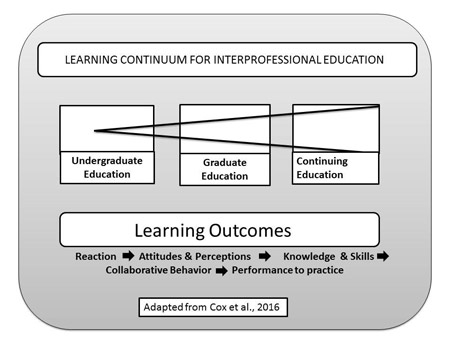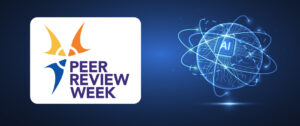There is no doubt that the foundational information in communication sciences and disorders (CSD) gained during undergraduate studies sets the stage for success during graduate education and beyond. We recognize that a clinician who is steeped in the science of the discipline will make wise and informed decisions that serve a client’s habilitation or rehabilitation. Our challenge is to teach the science of our discipline in an authentically rigorous fashion that matches the learning style of our students. Recognition of the essential nature of evidence-based practice mandates that our students be versed not only in the ability to consume scientific findings but to seek out those findings continually. One of our most important roles as educators is engendering curiosity about cause and effect in our students; developing the curiosity associated with a master clinician has to start well before graduate school. The basic science courses are not simply foundational for later learning—they are foundational for professional thinking and problem solving, and even for interprofessional treatment. It might be fruitful to examine students of the present generation.
Who Are the Students of the Present Generation?
The current traditional undergraduate student falls into the demographic category of Generation Z (Cilliers, 2017). Students in our undergraduate classes were born in the shadow of the terrorist attacks of 2001, and most have never known a time when we were not in a “war without borders.” They’ve experienced the largest economic disaster (2008) since the Great Depression, and generally they are skeptical of politicians who appear to be serving themselves rather than the needs of their constituencies. This context has borne students who have a deeper commitment to improving society than did previous generations but who also have an interest in entrepreneurial adventures on a small scale. They appreciate generative action that produces a product, and they hope that the product does well—with profit taking a backseat. They are certainly wedded to technology, using multiple devices to communicate and receive information, but face-to-face communication with others provides an important sense of community. They have passion and drive, and it is for the good of society. They are resilient and have always lived in a global environment.
How Does This Fit with Our Current Instructional Method?
First, as teachers, we can relax the need to provide all content in class. These students are quite comfortable with a learning management system (LMS), and didactic content can be placed online and easily accessed (e.g., the flipped learning model [Davila, Huber, Reyna, & Meier, 2017]). Generation Z students appreciate graphics and images over text, so the online content should include link-outs to videos or other sources that enhance the learning. You, the instructor, are now also taking on the added role of facilitator, helping the student make sense of the information and experiences that you are providing. Finally, undergraduate education is placed within the early stage of interprofessional education (IPE; see Figure 1), in which students are introduced to clinical practice and in which they develop attitudes and perceptions about clinical process. Students will appreciate knowing that the teamwork utilized during exploratory activities is part of the workplace goal of developing interprofessional skills. Basic science activities can immerse students in the information and values of the professions. Discussion of a modified barium swallow study video can also include the issues related to treatment, personal choices, and professional responsibilities—and an introduction of these basic IPE skills will result in better outcomes for the patient/client.

Figure 1. Model of Interprofessional integration. Modified from Cox, M., Cuff, P., Brandt, B., Reeves, S., & Zierler, B. (2016). Measuring the impact of interprofessional education on collaborative practice and patient outcomes. Journal of Interprofessional Care, 30(1), 1–3. doi:10.3109/13561820.2015.1111052
We are challenged to set up experiences that facilitate learning. These experiences involve personally engaging with the material under study as well as providing problems related to the material itself, ideally bringing an interdisciplinary perspective into the mix. The student’s task is not only to study the material but also to resolve a situation. Generation Z is not content with empty exercises; these students are impatient to bring change that is meaningful to others’ lives as well as their own.
In our CSD basic science courses at Idaho State University’s Department of Communication Sciences and Disorders, we have a natural laboratory that can serve students’ exploratory needs. For example, in anatomy, we can set up the activity so that students do the exploration for structures as well as identify specific muscles and functions related to speech function. In neuroscience, students can attempt to identify (a) specific gyri and sulci—based on stylized drawings or other photographs—to find the cranial nerves and recognize their roles or (b) association fibers in dissected specimens. The natural step is to add a pathology (e.g., Parkinson’s disease and its roots in the substantia nigra) and then to have the student find the relevant structures. A layer can be added to this by linking a video and clinical case records with the content under study. In hearing science, we can set students about the task of measuring reverberation and comparing results with acoustic standards or watching an auditory brainstem response emerge from noise to identify signs of the auditory pathway, neural signal and noise, and instrumentation. Students of Generation Z are both pragmatic and idealistic. They want whatever they are doing to count—and if we plant the seeds of investigation at the undergraduate level, we can reap the benefits once those students reach their graduate education and the years of productive professional life that follow.
Closing Thoughts
Can we capture that excitement in students? Can we help them to see the importance of our discipline to the lives of their future clients? Can we provide a means to learning that lets them discover the material? Can we inspire students to pursue the science and continue on to a research/academic career? We have known for decades that hands-on activities are much stronger learning experiences than didactic presentation alone, and we are currently working with a generation that holds relevance paramount. Our success in showing the relevance of students’ studies will determine whether they continue in the professions or move to other professions that have greater clarity of purpose.
References
Cilliers, E. J. (2017). The challenge of teaching generation Z. PEOPLE:International Journal of Social Sciences, 3(1), 188–198. doi:10.20319/pijss.2017.31.188198
Cox, M., Cuff, P., Brandt, B., Reeves, S., & Zierler, B. (2016). Measuring the impact of interprofessional education on collaborative practice and patient outcomes. Journal of Interprofessional Care, 30(1), 1–3. doi:10.3109/13561820.2015.1111052
Davila, Y., Huber, E., Reyna, J. & Meier, P. (2017). Improving the undergraduate science experience through an evidence-based framework for design, implementation and evaluation of flipped learning. In H. Partridge, K. Davis, & J. Thomas. (Eds.), Me, Us, IT! Proceedings ASCILITE2017: 34th International Conference on Innovation, Practice and Research in the Use of Educational Technologies in Tertiary Education (pp. 57–62).










